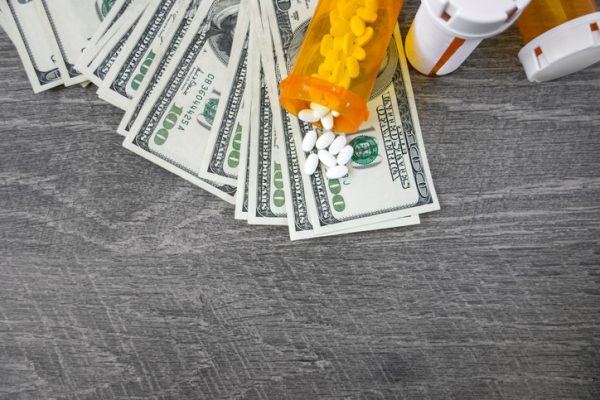
The IQVIA Institute for Human Data Science (formerly The IMS Institute) just released a study on medicine spending and use, which highlighted a 0.6 percent net increase in U.S. spending on medicines, factoring in off-invoice discounts and rebates. The report, Medicine Use and Spending in the U.S.: A Review of 2017 and Outlook to 2022, also showed a 12 percent reduction in opioid prescription volume – the largest decline ever – a positive sign in the ongoing battle against addiction.
“Our research and analytics revealed that 2017 saw new therapy starts for prescription opioids in pain management decline nearly eight percent, with a near doubling of medication-assisted therapies (MAT) for opioid use dependence to 82,000 prescriptions per month,” said Murray Aitken, senior vice president and executive director of the IQVIA Institute for Human Data Science in a news release. “This suggests that healthcare professionals are prescribing opioids less often for pain treatment, but they are actively prescribing MATs to address opioid addiction.”

What Are Healthcare Organizations Getting Wrong about Email Security?
A new report by Paubox calls for healthcare IT leaders to dispose of outdated assumptions about email security and address the challenges of evolving cybersecurity threats.
Using the metric morphine milligram equivalents (MMEs), which varies significantly by drug, the study determined that 23.3 billion fewer MMEs were dispensed in 2017. In addition, the number of prescriptions higher than 90 MMEs per day went down by 16.1 percent.
“This is the metric the CDC looks at and highlights because this represents the morphine consumption that is relevant in terms of looking at dependence and overdoses,” said Aitken in a conference call.
Though the report highlighted a relatively small .6 percent increase in net spending on prescriptions ($324 billion), gross costs (the invoice price) grew 1.4 percent ($453 billion). Discounts, rebates and other price concessions account for the difference.
“We are also showing that the use of coupons and manufacturer buydowns is increasing as a way to offset what would otherwise be increasing costs borne by the patients,” said Aitken during the call. “These have become a routine part of the payment landscape…”
In terms of pricing, the report tells the story of two patient groups. On one extreme, patients paid nothing for 31percent of prescriptions. But there were still 3.4 million prescriptions for which patients paid $500 or more out-of-pocket, $5.2 billion total.
The report also looked at new medicines hitting the market in 2017. Of the 42 new drugs, compared to 19 in 2016, 21 were for rare diseases and 14 for cancer – 52 new cancer medications have been launched in the past five years. In addition, 19 of the 42 had received Breakthrough Designation from the FDA. At the time the report was written, there were 2,601 late-phase drugs in the pipeline, including 657 in oncology and 285 to treat nervous system conditions.
Overall, medicine use continues to rise in the U.S, with hypertension drugs showing the highest volume. Around a third of Americans may be currently diagnosed with hypertension and new guidelines might kick that up to 50 percent.
The report predicted a continuing trend of relatively moderate price increases for prescription medicines, with many losing brand exclusivity.
Over the next five years,” said Aitken, “we are now forecasting that total growth for all medicines on a net price basis will average two to five percent.”
Photo: gerenme, Getty Images








